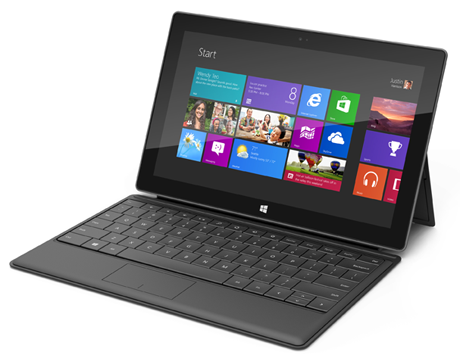Today, Microsoft fired a significant salvo in the war for a Unified User Experience, with the debut of its Surface tablet. Taking a page from the Apple playbook, Microsoft is creating both the hardware and software for the Surface, a strategy it once executed successfully, with the Xbox 360 gaming console; and twice not so successfully, with the Zune MP3 player and Kin smart phone going down in flames.
Last February, when Apple announced OS X 10.8, Mountain Lion, software industry thought leader Jean-Louis Gassée coined the phrase Grand Unified User Experience to describe what he saw in Apple's multi-platform operating systems that crossed mobile, desktop, and tablet and shared common foundational design elements. The essential idea was that no matter what the device, the user experience would feel the same, behave the same, and draw on similar patterns. Apple's Mountain Lion, of course, brings UX elements from iOS back to the desktop experience, completing a cycle of OS behavior.
Just as interesting is Microsoft's push into Unified UX, with its cross-platform operating systems consisting of Windows 8 and Windows Phone. Windows 8 — the "new Windows for new devices" — will run on tablets, laptops, and high definition all-in-ones; following a similar design structure and architecture. Fluid design tiles, plenty of gestural interactions, and a host of cloud-connected apps form the core of the Windows 8 experience.

The Microsoft Surface tablet, running Windows 8, is a significant step forward in Redmond's Unified UX strategy.
Within this Unified UX, be it Microsoft or Apple, the user will expect their devices to synchronize, not only data, but workflow. Start a conversation on your tablet and finish it on your laptop or phone. Write a document on the laptop and edit it on the way to work on your mobile device. While some of this is certainly possible now, the new Unified UX will further integrate the separate device experiences to make them seem like they fit together naturally.
In the coming war then, for a Unified User Experience, on one side we’ll have Google with its Android / Chrome OS, on another Windows 8 / Windows Phone, and, in the strategically enviable forward position, at least for the moment, of course Apple and OS X / iOS. With its reveal of the Surface tablets, Microsoft took a significant step forward today. How soon will Apple start feeling the heat? And how soon will Google step up its game?